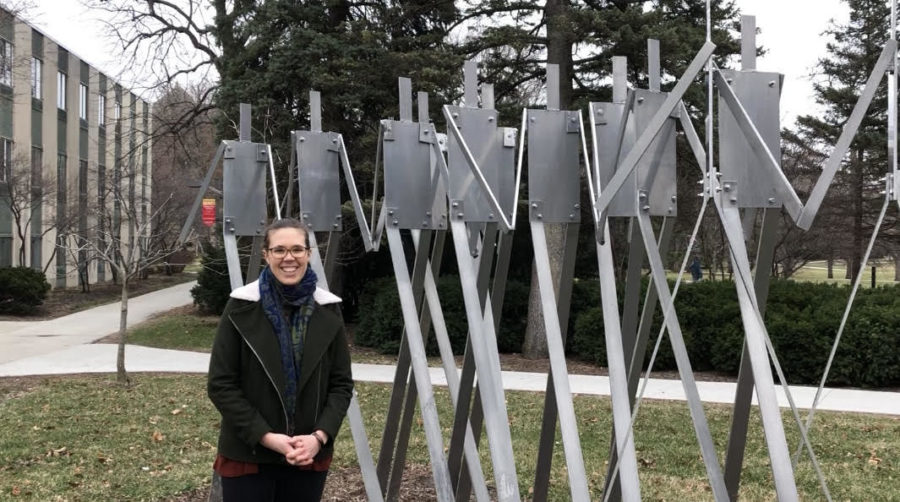Love in the time of COVID-19: Lilah Anderson
When restrictions on public meeting houses were put in place due to COVID-19, Lilah Anderson, an educator of visual literacy and learning for University Museums, said the news came in waves.
June 14, 2020
Editor’s note: This is part of a contributed collection of students and faculty experience with COVID-19.
A museum’s entire purpose is reliant on people gathering together in a single space. When restrictions on public meeting houses were put in place due to COVID-19, Lilah Anderson, an educator of visual literacy and learning for University Museums, said the news came in waves.
Starting with slight alterations to business operations and suddenly becoming drastic, Anderson said the staff decided to follow administration’s advice to keep their students and faculty as safe as possible.
In this scenario, it means closing the museums and cancelling their events. Anderson said University Museums are trying to figure out how to reschedule some of those events and also potentially move some into digital formats.
While all physical museum locations are closed for the sake of public safety, Anderson said her staff has been developing ways to connect with people and remain “open” in other ways.
“We are regularly using our social media channels and our website to share object-of-the-day information,” Anderson said. “Each of us have been writing sections of this so that we have a lot of different voices from our staff that are writing about the objects we have in our collection and things we have going on.”
On top of engagement activities such as “Art Madness,” a campus art-focused March Madness tournament, Anderson said the University Museums staff has also made short videos of their various museum spaces to help people feel like they can still visit.
“We’ve always had an e-museum collection in our digital database, so that’s a nice resource for people as well,” Anderson said. “All of our staff is working remotely, but we still are producing content and trying to make sure that we’re still a resource for the university community.”
Anderson said even in this time when physically visiting an art museum is not possible, University Museums is aiming to create thoughtful and meaningful content for people to look and contemplate in other ways.
“Art can be a powerful way for people to have conversations, to feel connected and to think about different ideas,” Anderson said. “That’s something we really need right now.”

















